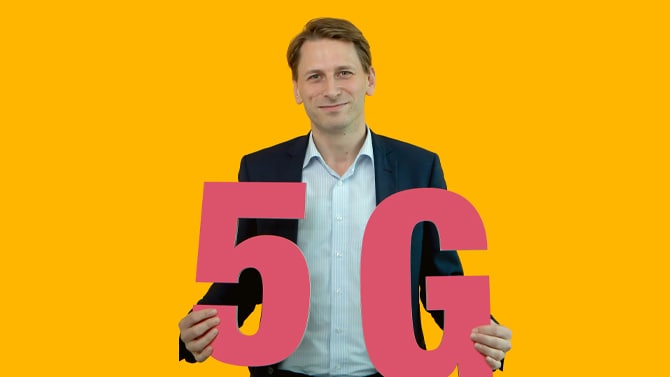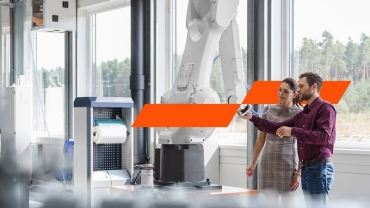
A new digital divide with 5Gs
By Steven Pattheeuws
The new 5G technology is going to change our lives dramatically. Of course, the promise for faster and better mobile connectivity sounds good to us as consumers, even though we may not be willing to pay more for it than we do for 4G. But real change will happen in the Internet of Things area. 5G will make it possible to deal with a tsunami of machine-to-machine data traffic that is coming and I expect communication between devices will soon overtake communication between people.
With 5G, it will be possible to send and receive huge amounts of data in thousands of a second and 5G technology will allow for about one million connected devices per square mile. Think of devices in connected cars or connected vessels, think of connected home appliances, AR and VR appliances, and all kinds of machines and robots. This technology will create a smarter and more connected world with smart cities, smart ports, smart houses, internet of things and self-driving cars. Once the 5G network is up and running, possibilities are in fact unlimited.


No nationwide coverage of 5G
Right now, telecom providers are heavily investing in the preparation of 5G and most of them have started 5G pilots. These include ongoing pilots on connected cars, trucks, ships, airplane engines, factories and logistics parks. Some pilots also tested 5G to deliver AR and VR in the context of gaming. In the Netherlands, there are 5G pilots in partnership between telecom operators, equipment vendors and business partners, for industrial applications in the port of Rotterdam and around smart city in the city of Groningen.
Right now, the rollout of 5G in the Netherlands is starting. While this sounds promising, we already know that there will be an important challenge for 5G. This is because after launch, immediate nationwide coverage at sufficient bandwidth will not be possible. The investments required, particularly in the densification of the network to provide capacity and coverage at scale, will be challenging. This situation will last for quite some time in all mature markets.
Densely populated urban areas will benefit from the possibilities 5G has to offer, while smaller cities and rural areas will be devoid of 5G. This means a farmer may not be able to receive data from sensors that check on a consignment of products or on the welfare of animals during transportation. Using drones in rural areas to check and maintain roads and railway networks may also be difficult. And what about driving your connected car from the city to the countryside? There will be problems once you are out of range of the 5G network, because connected devices may stop communicating with other devices inside and outside the car. The fact is that 5G only offers maximum added value if it’s everywhere: throughout the Netherlands, in all surrounding countries, and in all EU member states.
Vicious circle of a new digital divide
Incomplete coverage of 5G means we are heading towards a new digital divide, not between the rich and the poor, this time, but between people living in rural areas versus people living in urban areas. In areas without access to 5G, customers and businesses will lag behind in the adoption of new technological 5G applications. This will lead to decreasing economic development and lower investments in these areas, which, in turn, will lead to a lower demand of 5G. Urban areas on the other hand, will see increasing investments in 5G. It will be hard to get out of this vicious circle and the digital divide will grow even bigger.
Bridging the digital divide
The question is how the telecom industry will find ways to reach a nationwide 5G deployment. There are multiple options. Sharing networks between operators in rural areas is an obvious consideration. Telecom operators may accelerate 5G investments by shifting investments from ICT services and content back towards infrastructure. Governments could facilitate the deployment of 5G in rural areas and potentially support infrastructural investments in those areas.
New services and partnerships
Finally, telecom operators may venture into new areas, such as edge computing, data analytics services, IoT platform enablement, AR/VR vertical solutions, and new mobility solutions using drones. This will essentially result in telecom operators taking on a broader role than the one that has been a predominantly connectivity-oriented play in mobile up to now.
This broader role may require building alliances and exploring partnerships. Entering into such partnerships is not only a solution for telcos on the threshold of launching 5G, but also for businesses involved in developing new connected products and services that run on the 5G network. It will open up a whole new wave of opportunities for new digital offers and services. Telecom operators can play an important enabling role here if they decide to invest in digital capabilities, scale up innovative pilots, and establish new partnerships with vendors or other tech and data players.
Contact us


















